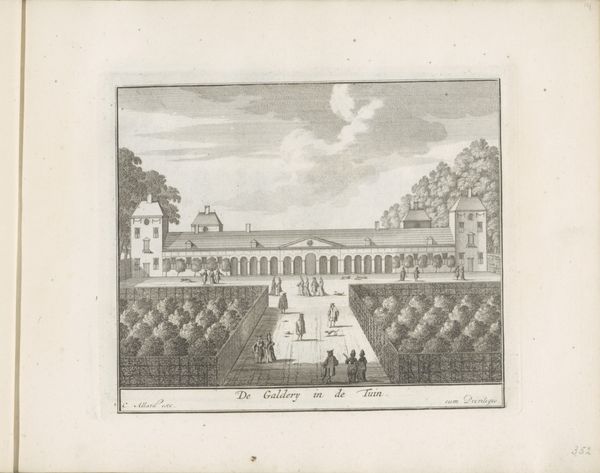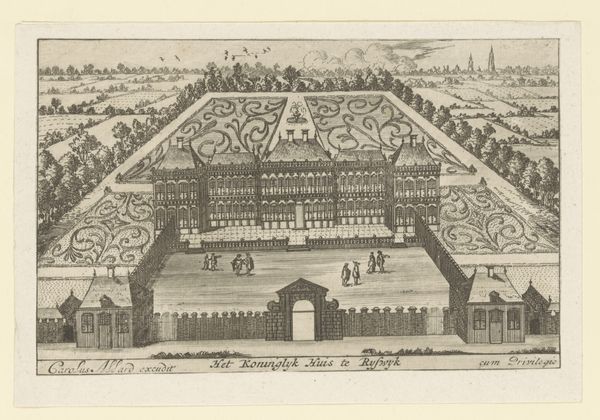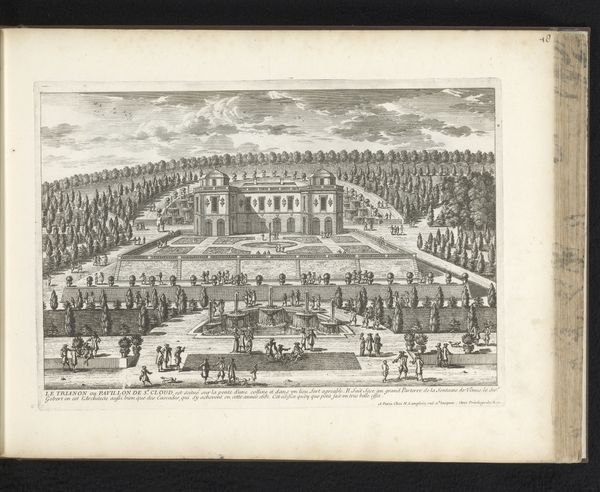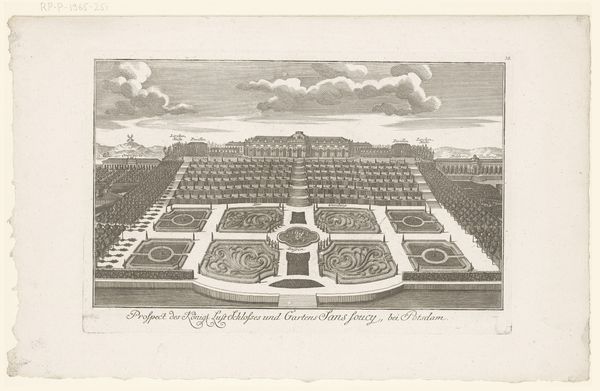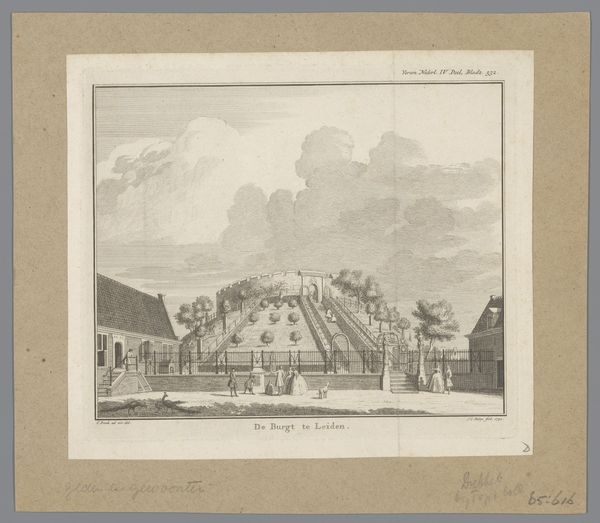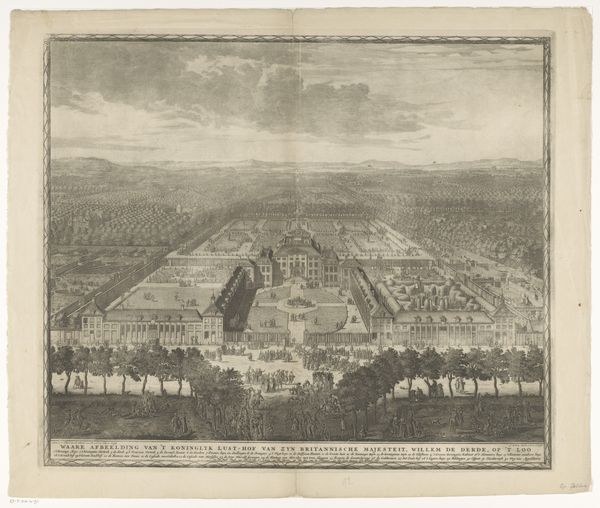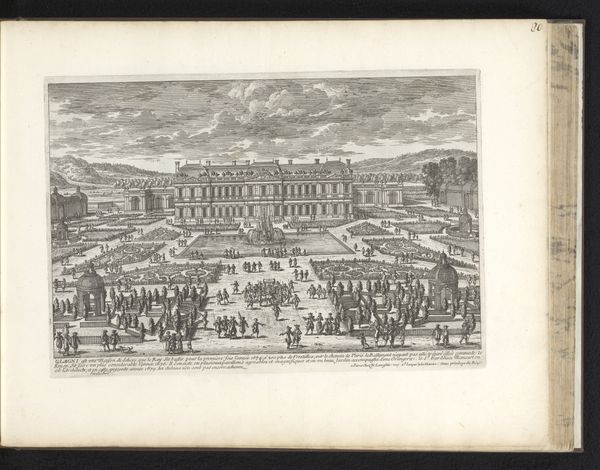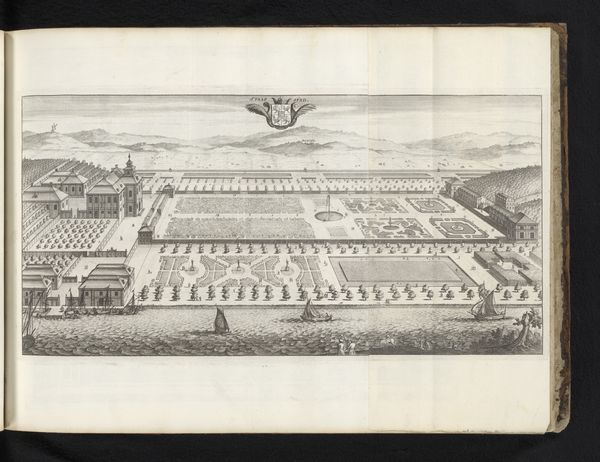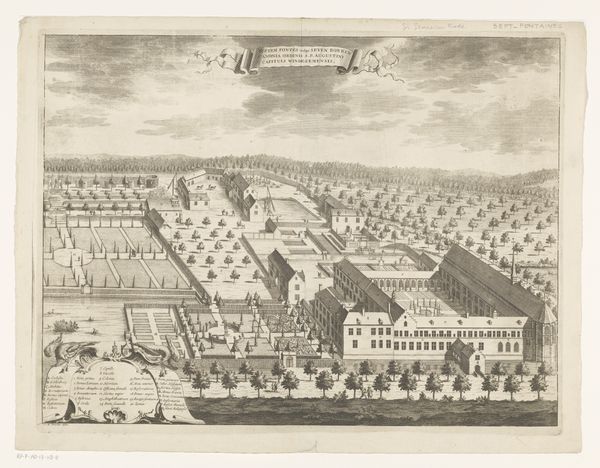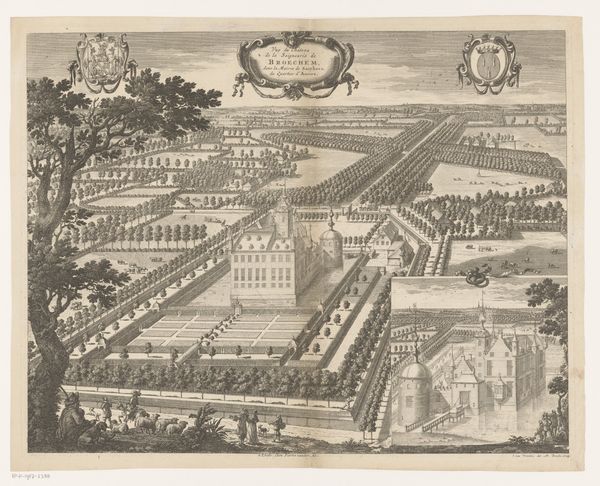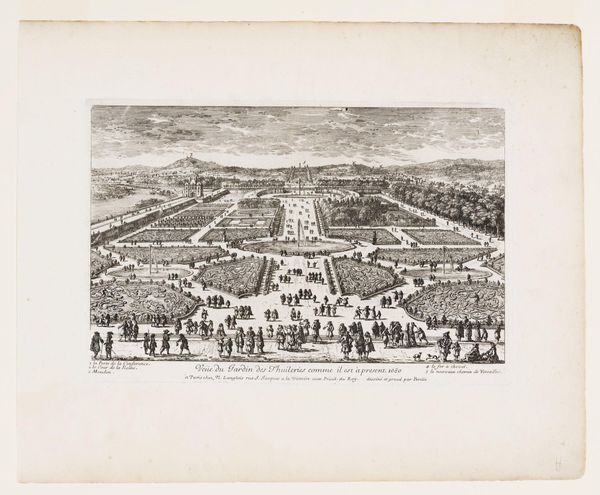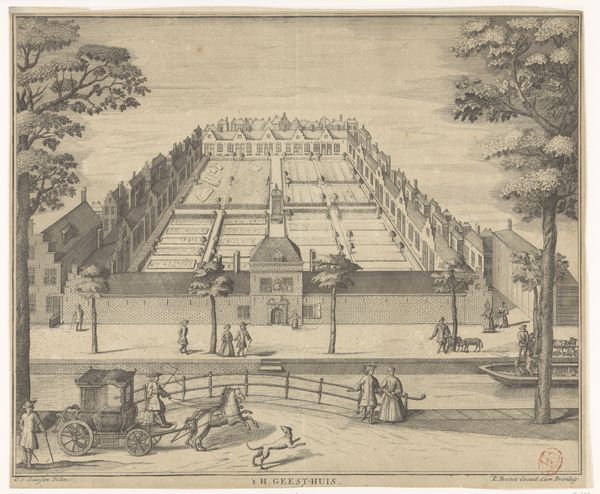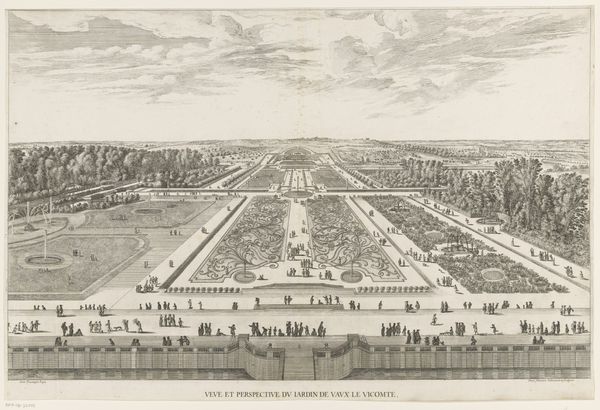
Gezicht op de watervallen en vijver in de tuin van het paleis van Fontainebleau, 1726 1726
0:00
0:00
janlamsvelt
Rijksmuseum
print, engraving
#
baroque
# print
#
landscape
#
cityscape
#
engraving
Dimensions: height 174 mm, width 203 mm
Copyright: Rijks Museum: Open Domain
Jan Lamsvelt's 1726 engraving captures the garden of Fontainebleau, where formal design meets symbols of human control over nature. Consider the fountains: water, life's essence, shaped by human hands, mirroring our attempts to govern the natural world. These are not merely decorative; they echo the mythological narratives where water often represents purification and rebirth, ideas that have persisted across civilizations. The formal gardens, stretching into the horizon, speak to a desire for order, a concept seen in ancient Roman gardens and the geometric layouts of Persian paradises. The presence of figures enjoying the manicured landscape is telling; it's a stage where social rituals play out, reflecting a controlled environment mirroring a controlled society. Yet, nature always pushes back, as seen in the clouds above. Thus, Lamsvelt’s engraving reminds us of the cyclical dance between control and freedom, a motif ever-present in our cultural memory.
Comments
No comments
Be the first to comment and join the conversation on the ultimate creative platform.

